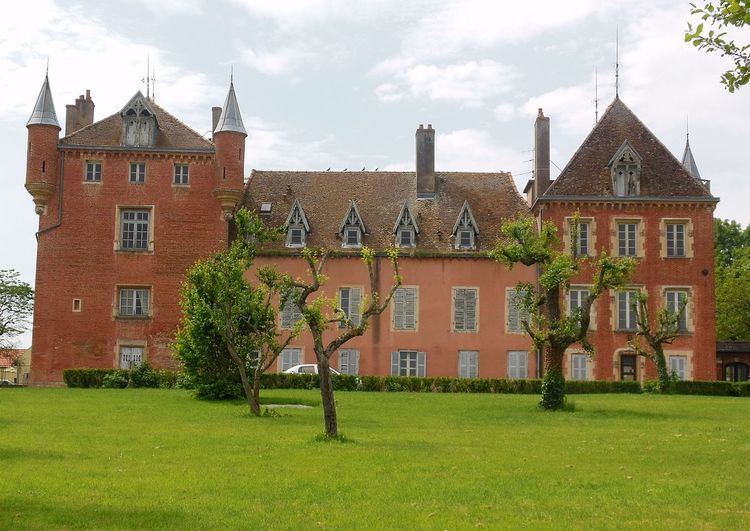INSEE/Postal code 21028 / 21130 Local time Tuesday 10:09 PM | Time zone CET (UTC+1) Area 9.43 km² Population 600 (1999) | |
 | ||
Region Bourgogne-Franche-Comté Weather 4°C, Wind S at 16 km/h, 83% Humidity | ||
Athée is a French commune in the Côte-d'Or department in the Bourgogne-Franche-Comté region of eastern France.
Contents
- Map of 21130 AthC3A9e France
- Geography
- Toponymy
- History
- Historical Highlights
- Administration
- Demography
- Lieux et monuments
- Notable people linked to the commune
- References
Map of 21130 Ath%C3%A9e, France
The inhabitants of the commune are known as Athéens or Athéennes.
Geography
Athée is located in the Natural Region of Val de Saône immediately north of Auxonne and south of Poncey-lès-Athée. Access to the commune is by the D24 road from Auxonne which passes through the length of the commune and the village and continues north-west to Magny-Montarlot. The D976 comes from Poncey-lès-Athée in the north and passes through the village continuing south-west to join Route Nationale 5 west of Auxonne.
The first phase of the LGV Rhin-Rhône (140 km long) between Villers-les-Pots (Côte-d'Or) and Petit-Croix (Territoire de Belfort), opened in 2011, traverses the commune but there is no station. The nearest railway stations are at Villers-les-Pots (3 km) and Tillenay station at Auxonne (5 km), both on the Dijon to Vallorbe line.
The west and north-west of the commune are heavily forested with the rest of the commune farmland.
The Saône river forms the eastern border of the commune and there are drainage Ditches in the forests (Grande Bois Defendu and Bois des Noues) and Canal pounds in the south of the commune.
Geologically, Athée is on the Bresse Graben in the Saône Plain. The soil is sandy clay.
Toponymy
The name Athée comes from the Latin Attegiae, meaning "huts" or "Shepherd's cabins" which constituted the original village. Depending on the time and the writer the village has been called:
History
The oldest mention of Athée recognised by the majority of historians was in 679 in a Charter of the Cartulary of the Abbey Saint-Bénigne of Dijon.
The Lordship of Athée - consisting of Athée, Poncey, the "Grange Lochère" located at the end of a bridge over the Saône, and Auxonne, as well as Magny-lès-Auxonne 4, was probably founded in the early High Middle Ages.
It is located on Holy Roman Empire land and is one of the three territories which were fiefs of Saint-Seine-sur-Vingeanne depending on the County of Auxonne, run by counts for the monks of the priory of Saint-Vivant-en-Amous. The Lord of Athée was the vassal of Saint-Seine who was himself a vassal of the Count of Auxonne who in turn was a vassal of the monks of Saint-Vivant, who were vassals of the Emperor of the Holy Roman Empire
From 1237 the Count of Auxonne was replaced in the chain of vassalage by the Duke of Burgundy following an exchange of lands between Hugh IV, Duke of Burgundy and John, Count of Chalon.
From 1366 to the French Revolution the Lordship of Athée was held by co-lords who were canons of Sainte-Chapelle de Dijon on the one hand and Lay Lords (the Laverne, Senevoy, Moussier families) on the other.
In 1516 the lordship became subject to the Kingdom of France and depended on the bailiwick of Auxonne and the Généralité de Bourgogne (Generality of Burgundy).
Between 1790 and 1794 Athée, separately from Poncey and Magny, became a French commune depending on the Canton of Auxonne, the district of Saint-Jean-de-Losne, and the department of Côte-d'Or.
Since 1801 the commune has depended on the Canton of Auxonne, the Arrondissement of Dijon, the department of Côte-d'Or, and, since 1960, the region of Burgundy.
Until 1790 Athée was the seat of a Rector and the patron was the Sacristan of Dijon Cathedral depending primarily on the Deanery of Oscheret, then the Archpriest of Genlis of the Diocese of Chalon.
Today Athée is part of the parish of Auxonne, the deanery of Vingeanne-Saône, and the Diocese of Dijon.
Historical Highlights
Administration
List of Successive Mayors
(Not all data is known)
Demography
In 2010 the commune had 780 inhabitants. The evolution of the number of inhabitants is known from the population censuses conducted in the commune since 1793. From the 21st century, a census of communes with fewer than 10,000 inhabitants is held every five years, unlike larger towns that have a sample survey every year.
Sources : Ldh/EHESS/Cassini until 1962, INSEE database from 1968 (population without double counting and municipal population from 2006)
Lieux et monuments
The Church of Notre-Dame-de-la-Nativité contains the Tombstone of Guillaume Bouot (16th century) which is registered as a historical object.
